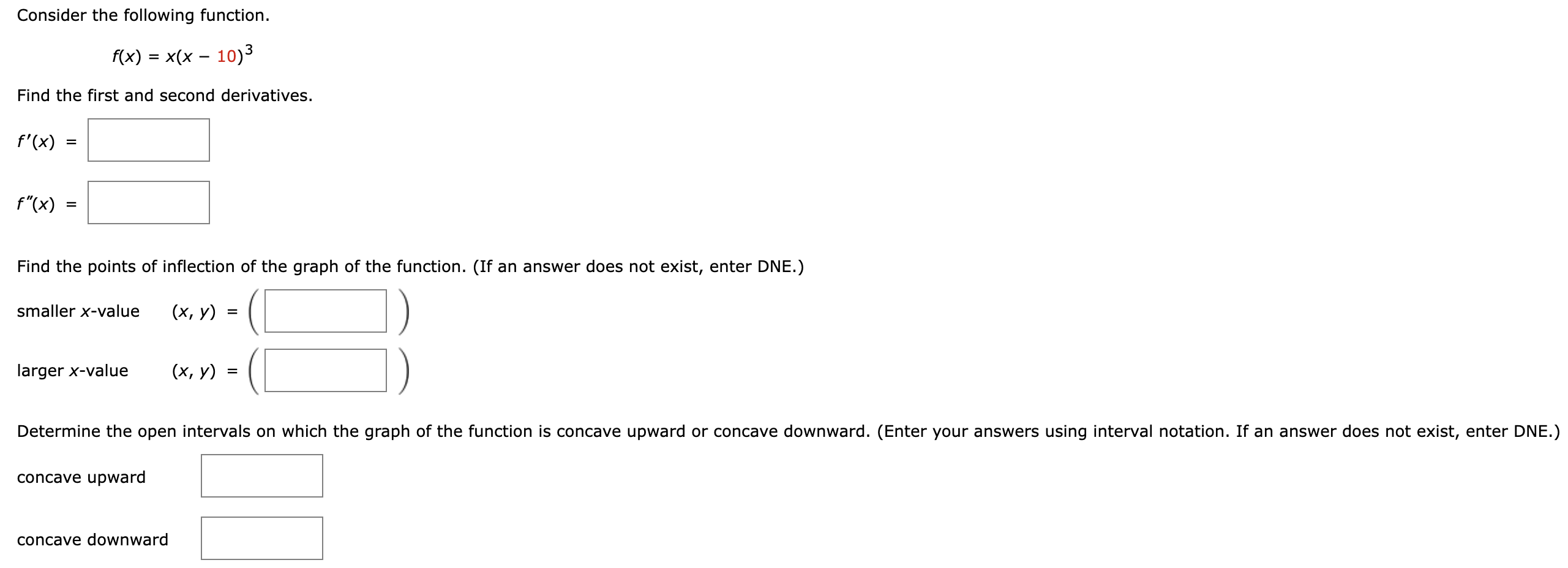Consider the following function. f(x) = x(x−10)3 Find the first and second derivatives. f′(x) = f′′(x) = Find the points of inflection of the graph of the function. (If an answer does not exist, enter DNE.) smaller x-value (x, y) = ( ) larger x-value (x, y) = ( ) Determine the open intervals on which the graph of the function is concave upward or concave downward. (Enter your answers using interval notation. If an answer does not exist, enter DNE.) concave upward concave downward
